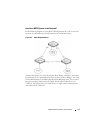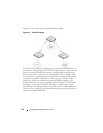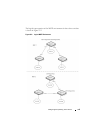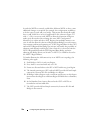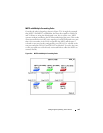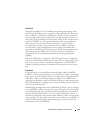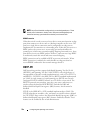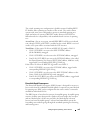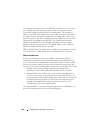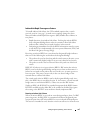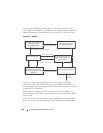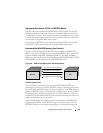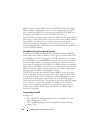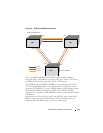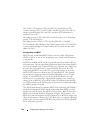
Configuring the Spanning Tree Protocol 725
The switch spanning tree configuration is global in nature. Enabling RSTP-
PV disables other spanning tree modes on the switch. The switch cannot
operate with some ports configured to operate in standard spanning tree
mode and others to operate in RSTP-PV mode. However, RSTP-PV has
fallback modes for compatibility with standards-based versions of spanning
tree.
Access Ports—For an access port, normal IEEE BPDUs will be received and
sent, though STP-PV or RSTP-PV is enabled on the switch. BPDUs received
on the access port will be associated with the CST instance.
Trunk Ports—If the native VLAN on an IEEE 802.1Q trunk is VLAN 1:
• VLAN 1 STP BPDUs are sent to the IEEE STP MAC address
(0180.c200.0000), untagged.
• VLAN 1 STP BPDUs are also sent to the SSTP MAC address, untagged.
• Non-VLAN 1 STP BPDUs are sent to the SSTP MAC address (also called
the Shared Spanning Tree Protocol [SSTP] MAC address, 0100.0ccc.cccd),
tagged with a corresponding IEEE 802.1Q VLAN tag.
If the native VLAN on an IEEE 802.1Q trunk is not VLAN 1:
• VLAN 1 STP BPDUs are sent to the SSTP MAC address, tagged with a
corresponding IEEE 802.1Q VLAN tag.
• VLAN 1 STP BPDUs are also sent to the IEEE STP MAC address on the
Native VLAN of the IEEE 802.1Q trunk, untagged.
• Non-VLAN 1 STP BPDUs are sent to the SSTP MAC address, tagged with
a corresponding IEEE 802.1Q VLAN tag.
DirectLink Rapid Convergence
The DirectLink Rapid Convergence (DRC) feature is designed for an access-
layer switch that has redundant blocked uplinks. It operates on ports blocked
by spanning tree. DRC can be configured for the entire switch; it cannot be
enabled for individual VLANs.
The DRC feature is based on the concept of an uplink group. An uplink group
consists of all the ports that provide a path to the root bridge (the root port
and any blocked ports). If the root port fails, the blocked port with next
lowest cost from the uplink group is selected and immediately put in the
forwarding state without going through the standard spanning tree listening
and learning states.



